Accepted Scientific Name: Eriosyce odieri subs. glabrescens (F.Ritter) Katt.
Eriosyce (Cactac.) gen. revis. & ampl. (Succ. Pl. Res., 1) 118 (1994)

Neoporteria napina f. glabrescens (Eriosyce odieri subs. glabrescens) Photo by: Valentino Vallicelli
Origin and Habitat: From coastal Chile (Region III Atacama) in the Huasco valley (Atacama Desert)
Habitat: It grows in one of the most arid areas in the world, among rocky crags and sand dunes in sandy-clayey soil in a vegetable formation called “Costal desert of Huasco,” a typical “desertic mattoral” that is just spectacular and impressive when it displays the phenomenon of the “flowering desert”.
Altitude around 200 m.
Synonyms:
See all synonyms of Eriosyce odieri
back
Accepted name in llifle Database:Eriosyce odieri (Lem. ex Salm-Dyck) Katt.Eriosyce (Cactac.) gen. revis. & ampl. (Succ. Pl. Res., 1) 118 (1994):.Synonymy: 29
Accepted name in llifle Database:Eriosyce odieri subs. fulva (F.Ritter) Katt.Eriosyce (Cactac.) gen. revis. & ampl. (Succ. Pl. Res., 1) 118 (1994)Synonymy: 5
Accepted name in llifle Database:Eriosyce odieri subs. glabrescens (F.Ritter) Katt.Eriosyce (Cactac.) gen. revis. & ampl. (Succ. Pl. Res., 1) 118 (1994)Synonymy: 8
Accepted name in llifle Database:Eriosyce odieri subs. krausii (F.Ritter) FerrymanCactaceae Syst. Init. 16: 11 (11 Oct. 2003)Synonymy: 28
Accepted name in llifle Database:Eriosyce odieri var. monte-amargensis Katt.Eriosyce (Cactac.) gen. revis. & ampl. (Succ. Pl. Res., 1) 118 (1994)Synonymy: 4
Accepted name in llifle Database:Eriosyce odieri var. weisseri A.E.Hoffm. & Helmut WalterCact. Fl. Silvestre Chile ed. 2 258 (-259; fig. 96b). 2004 [Dec 2004]Synonymy: 2
back
Description: Eriosyce odieri subs. glabrescensSN|2824]]SN|2387]] is a tiny geophyte, with a solitary spherical or flattened stem, slowly growing atop a thick, underground taproot, with a constriction between the stem and the root, eventually becoming somewhat elongated in cultivation. It distinguish from the standard Eriosyce odieriSN|2387]]SN|2824]] for its very short spine, however it is quite variable and short and long spined forms can exist side by side in the same population and intermediate forms occurs too. Moreover a short spined juvenile phase is often followed by a long spined adult phase of the life cycle, but some plants retain the juvenile characteristics even at an old age (Neoteny), while other start soon to produce longer adult spines.
Stem: Slow growing, up to 5-8 cm across, 4-8 cm tall, the colour of the stem is very variable from one specimen to another. It can be glaucous-blue, glossy green or dark purple with brown, olive, grey tones.
Tubercles: Larger than ssp. napina.
Areoles: Grey.
Radial spines: Variable, from very short and thin or almost absent (subsp. glabrescens), to black, recurved, and strong (subs. odieri).
Central spines: None or one, strongly bent upward.
Roots: Forms a tuberous root system with (usually) a very large carrot-like root
Flowers: Approx 3,5 cm long, 4-6 cm in diameter, pale yellowish-red to dull pink with a silky shine, buds densely hairy with brown wool.
Fruits: Large, red, clavate, wrapped in white wool.
Blooming season: Flowers already when young, synchronised flowering of the whole plants takes place over one or two days, and they remain open for about three or four days.
Blossoming time: late spring.
More...Subspecies, varieties, forms and cultivars of plants belonging to the Eriosyce odieri group
 Eriosyce odieri (Lem. ex Salm-Dyck) Katt.: Stems 3-5 cm in diameter and only radial spines that are not flattened against the surface. Distribution: only found in the habitat of Morro Copiapo a solitary mountain alongside the sea 10 km south of Caldera.
Eriosyce odieri (Lem. ex Salm-Dyck) Katt.: Stems 3-5 cm in diameter and only radial spines that are not flattened against the surface. Distribution: only found in the habitat of Morro Copiapo a solitary mountain alongside the sea 10 km south of Caldera.- Eriosyce odieri subs. fulva (F.Ritter) Katt.: Stems only 2-3 cm wide with very small tubercles. Distribution: East of Totoral.
 Eriosyce odieri subs. glabrescens (F.Ritter) Katt.: Stems only 2-3 cm in diameter with nearly spineless large tubercles. Distribution: Border between Morro Copiapo and Huasco.
Eriosyce odieri subs. glabrescens (F.Ritter) Katt.: Stems only 2-3 cm in diameter with nearly spineless large tubercles. Distribution: Border between Morro Copiapo and Huasco. Eriosyce odieri subs. krausii (F.Ritter) Ferryman: Small 2 to 4 cm Ø, somewhat flattened, red-brown to grey-green. Distribution: North of Caldera, Atacama, to Cifuncho, Antofagasta, Chile.
Eriosyce odieri subs. krausii (F.Ritter) Ferryman: Small 2 to 4 cm Ø, somewhat flattened, red-brown to grey-green. Distribution: North of Caldera, Atacama, to Cifuncho, Antofagasta, Chile. Eriosyce odieri var. malleolata (F.Ritter) A.E.Hoffm. & Helmut Walter: Distribution: North of Chañaral on the coast.
Eriosyce odieri var. malleolata (F.Ritter) A.E.Hoffm. & Helmut Walter: Distribution: North of Chañaral on the coast. Eriosyce odieri var. monte-amargensis Katt.: Distribution: Monte Amargo, 30 km suth-east of Caldera.
Eriosyce odieri var. monte-amargensis Katt.: Distribution: Monte Amargo, 30 km suth-east of Caldera. Eriosyce odieri var. weisseri A.E.Hoffm. & Helmut Walter: This is the more northern species of the of the Thelocephala group. Distribution: Caleta Cifuncho, Antofagasta, Chile.
Eriosyce odieri var. weisseri A.E.Hoffm. & Helmut Walter: This is the more northern species of the of the Thelocephala group. Distribution: Caleta Cifuncho, Antofagasta, Chile.
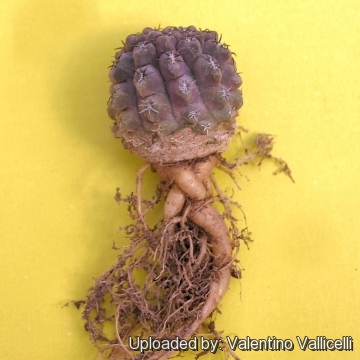 Neoporteria napina f. glabrescens (Eriosyce odieri subs. glabrescens) Photo by: Valentino Vallicelli
Neoporteria napina f. glabrescens (Eriosyce odieri subs. glabrescens) Photo by: Valentino Vallicelli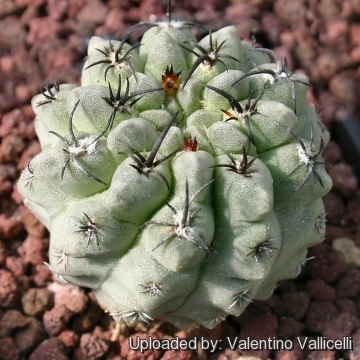 Neoporteria napina f. glabrescens (Eriosyce odieri subs. glabrescens) Photo by: Valentino Vallicelli
Neoporteria napina f. glabrescens (Eriosyce odieri subs. glabrescens) Photo by: Valentino Vallicelli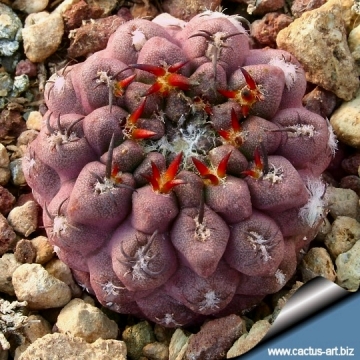 Neoporteria napina f. glabrescens (Eriosyce odieri subs. glabrescens) Photo by: Cactus Art
Neoporteria napina f. glabrescens (Eriosyce odieri subs. glabrescens) Photo by: Cactus Art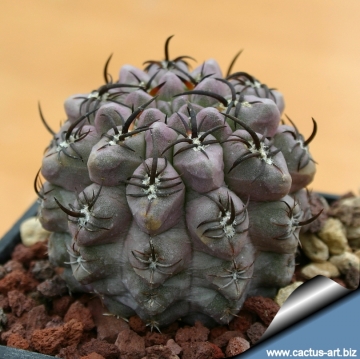 FR710 Totoral Bajo, 03 Atacama, Chile (Eriosyce odieri subs. glabrescens) Photo by: Cactus Art
FR710 Totoral Bajo, 03 Atacama, Chile (Eriosyce odieri subs. glabrescens) Photo by: Cactus Art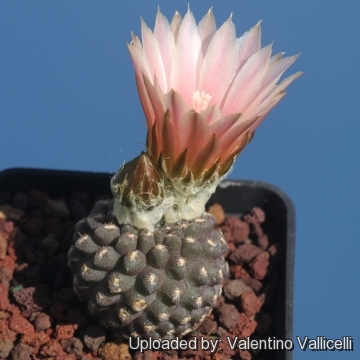 Neoporteria napina f. glabrescens (Eriosyce odieri subs. glabrescens) Photo by: Valentino Vallicelli
Neoporteria napina f. glabrescens (Eriosyce odieri subs. glabrescens) Photo by: Valentino Vallicelli Neoporteria napina f. glabrescens (Eriosyce odieri subs. glabrescens) Photo by: Cactus Art
Neoporteria napina f. glabrescens (Eriosyce odieri subs. glabrescens) Photo by: Cactus Art Neoporteria napina f. glabrescens (Eriosyce odieri subs. glabrescens) Photo by: Valentino Vallicelli
Neoporteria napina f. glabrescens (Eriosyce odieri subs. glabrescens) Photo by: Valentino Vallicelli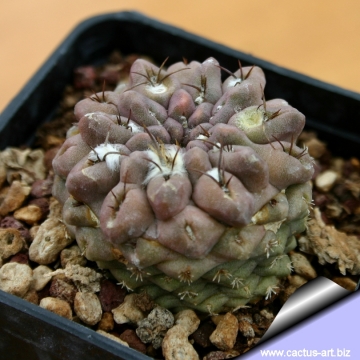 Neoporteria napina f. glabrescens (Eriosyce odieri subs. glabrescens) Photo by: Cactus Art
Neoporteria napina f. glabrescens (Eriosyce odieri subs. glabrescens) Photo by: Cactus ArtCultivation and Propagation: Watering Needs: Its thick taproot is susceptible to over-watering. Sometimes it's grafted to avoid root rot problems.
Frost Tolerance: It likes warmth (recommended minimum winter temperature 5° C). But a plant kept perfectly dry can easily survive at winter night temperatures below 0° C.
Sun Exposure: Suited for sunny-bright exposure; but can tolerate light shade. Suited for airy exposures. It needs a deep pot and good drainage to accommodate its tap root. Keep dry in winter.
Pests & diseases: It is especially prone to rot, therefore, underpot in a smaller container filled with very porous compost.
Propagation: By seeds or graft. Seeds can be sown in the spring or summer. The seedlings should not be disturbed until they are well rooted, after which they can be planted separately in small pots.
More...


















